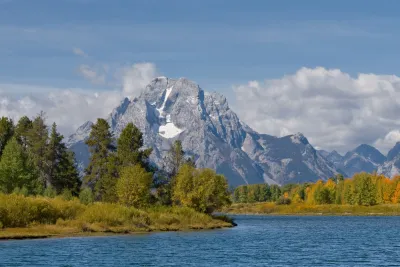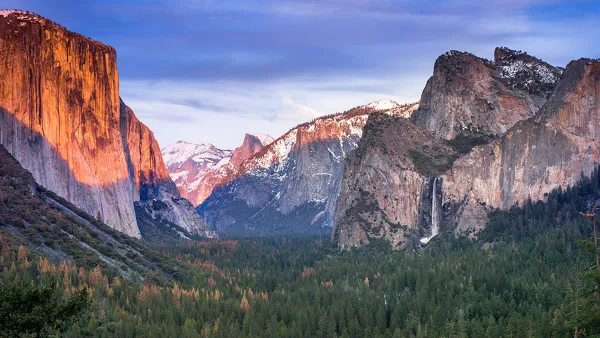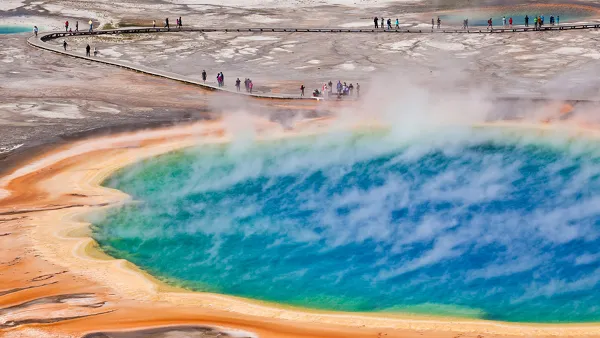With the Trump administration's support, private industry is busy building new broadband infrastructure on public lands. The effect is already obvious in many national parks.

Jimmy Tobias reports on the proliferation of telecommunications infrastructure in public lands, a consequence of policy and philosophy changes enacted by the Trump administration.
In fact, [the National Park Service] is presently pursuing a massive expansion of cellular and broadband facilities at Grand Teton National Park. Working in tandem with major telecom companies like AT&T and its agents, the agency is planning to permit the installation of more than 60 miles of fiber-optic cable, as well as at least nine new cell tower sites scattered throughout the park. The plan, which is awaiting a final permit, would blanket much of Grand Teton with new and stronger coverage. It is shaping up to be the largest single expansion of telecommunications infrastructure in national park history.
Supporters of expanded cell service in national parks point to the potential support such technology could provide for search and rescue missions, as well as the large demand for cell service among the general public. Others point to the need for places where people can still unplug from technology and social media.
Grand Teton National Park is really just a testing ground, however, for a wider deployment of telecom infrastructure in public lands."The telecom giants — AT&T, Verizon and more — are pushing to build out infrastructure on protected public lands across the country," according to Tobias, "[a]nd they have found a close collaborator in the federal government, which is working alongside industry operatives to open many national parks and other public lands to commercial wireless service."
Specifically, according to Tobias, "President Donald Trump’s Federal Communications Commission has limited the authority of local governments to stop such development." Also, "The administration is also working to 'streamline' environmental reviews and speed up the permitting process that lets companies build telecom facilities on federal land."
FULL STORY: The Park Service is selling out to telecom giants

National Parks Layoffs Will Cause Communities to Lose Billions
Thousands of essential park workers were laid off this week, just before the busy spring break season.

Retro-silient?: America’s First “Eco-burb,” The Woodlands Turns 50
A master-planned community north of Houston offers lessons on green infrastructure and resilient design, but falls short of its founder’s lofty affordability and walkability goals.

Delivering for America Plan Will Downgrade Mail Service in at Least 49.5 Percent of Zip Codes
Republican and Democrat lawmakers criticize the plan for its disproportionate negative impact on rural communities.

Test News Post 1
This is a summary

Test News Headline 46
Test for the image on the front page.

Balancing Bombs and Butterflies: How the National Guard Protects a Rare Species
The National Guard at Fort Indiantown Gap uses GIS technology and land management strategies to balance military training with conservation efforts, ensuring the survival of the rare eastern regal fritillary butterfly.
Urban Design for Planners 1: Software Tools
This six-course series explores essential urban design concepts using open source software and equips planners with the tools they need to participate fully in the urban design process.
Planning for Universal Design
Learn the tools for implementing Universal Design in planning regulations.
EMC Planning Group, Inc.
Planetizen
Planetizen
Mpact (formerly Rail~Volution)
Great Falls Development Authority, Inc.
HUDs Office of Policy Development and Research
NYU Wagner Graduate School of Public Service




























